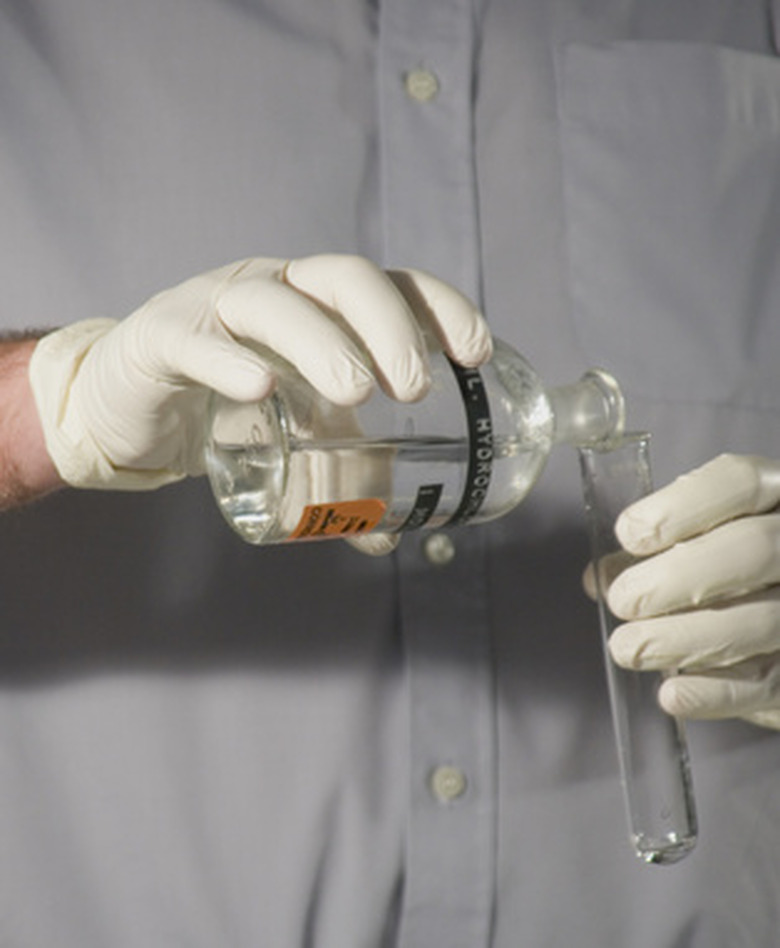How To Make Oxalic Acid
Oxalic acid (H2C2O4) is a relatively strong organic acid and is a common reducing agent in organic chemistry. There are a number of methods for preparing oxalic acid from nitric acid, and one important difference among them is the amount of oxalic acid that is produced from a given amount of nitric acid. Oxalic acid can be prepared in a laboratory with nothing more than sugar and nitric acid, although a small amount of vanadium pentoxide will act as a catalyst and allow the reaction to proceed much more swiftly.
Step 1
Place the sugar in the flat-bottomed flask and add the nitric acid. Heat the flask in a bath of boiling water. The sugar will dissolve in a vigorous reaction that produces an extremely large amount of nitric acid fumes.
Step 2
Remove the flask from the water bath as soon as the reaction begins to produce the fumes, and place it on a surface that will not conduct heat. After the reaction subsides in about 15 minutes, pour the still-hot solution into an evaporating basin.
Step 3
Evaporate the solution with mild heat from a Bunsen burner for about 15 minutes until it reaches a volume of about 20 mL, then add about 40 mL of water. Evaporate the solution down to about 20 mL again, and thoroughly cool the solution in an ice-water bath.
Step 4
Allow the rapidly forming crystals of oxalic acid to complete their crystallization in about 10 minutes. Filter the remaining solution through filter paper, and add the crystals to a small amount of hot water. Allow the oxalic acid to recrystallize, which should take about 20 minutes.
Step 5
Dry the crystals by pressing them between pads of drying paper or with a desiccator. Don't use an ordinary oven since this could cause the oxalic acid to decrystallize. This preparation should yield about 7 g of oxalic acid.
Things Needed
- 100 mL nitric acid
- 20 g cane sugar
- 750 mL flat-bottomed flask
- Bunsen burner
- Drying paper or desiccator
- Evaporating basin
- Filter paper
- Large container to hold boiling water
Warning
This method will produce a large amount of nitric acid fumes and must be performed under a fume hood with adequate ventilation.
Cite This Article
MLA
Robinson, Allan. "How To Make Oxalic Acid" sciencing.com, https://www.sciencing.com/make-oxalic-acid-5328735/. 24 April 2017.
APA
Robinson, Allan. (2017, April 24). How To Make Oxalic Acid. sciencing.com. Retrieved from https://www.sciencing.com/make-oxalic-acid-5328735/
Chicago
Robinson, Allan. How To Make Oxalic Acid last modified August 30, 2022. https://www.sciencing.com/make-oxalic-acid-5328735/
